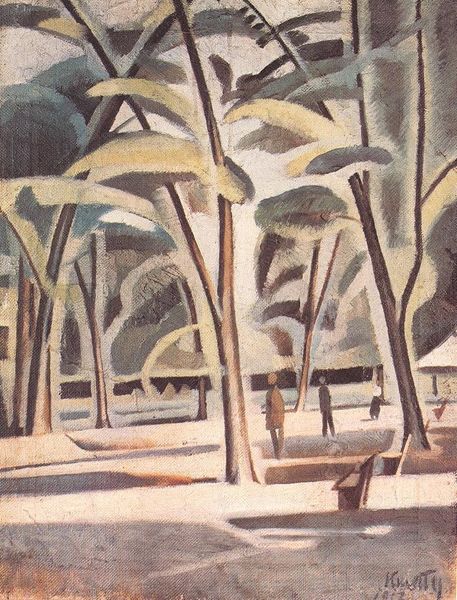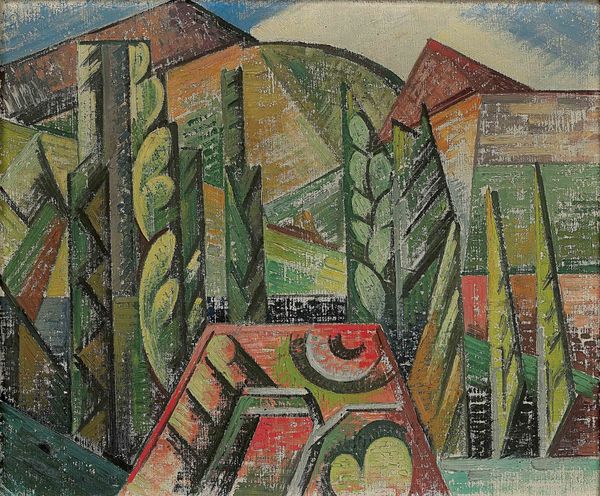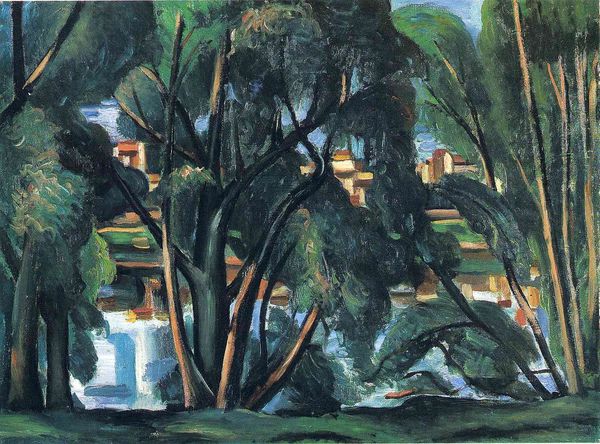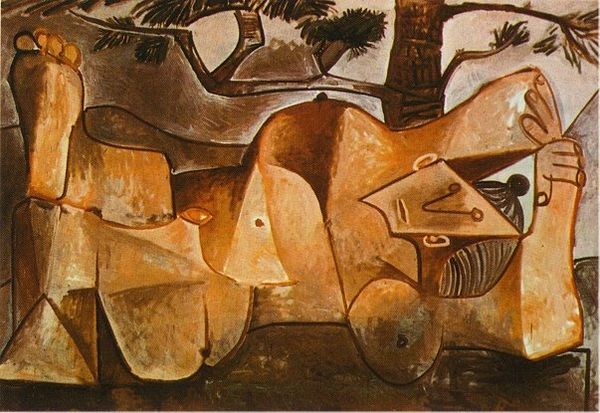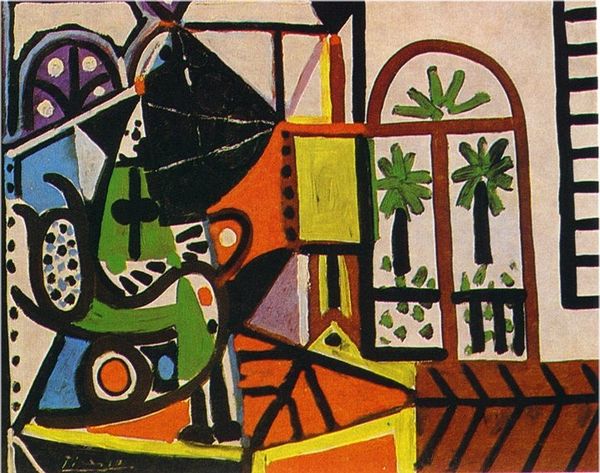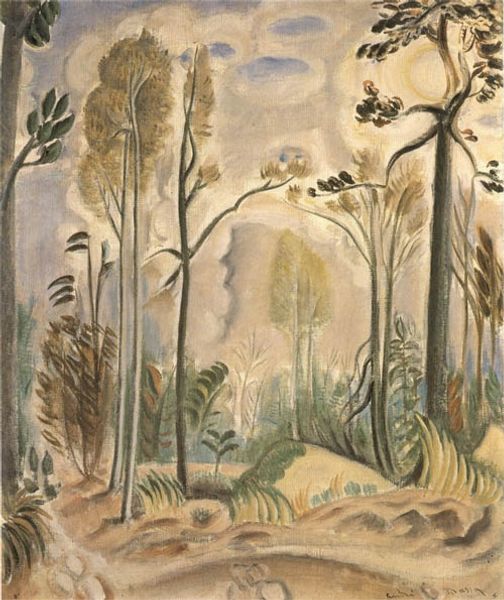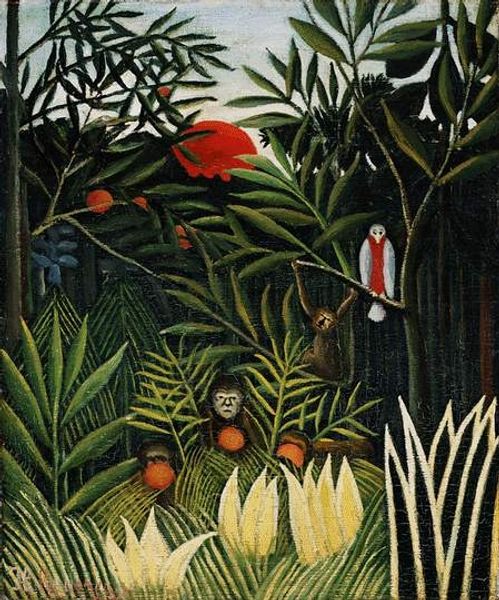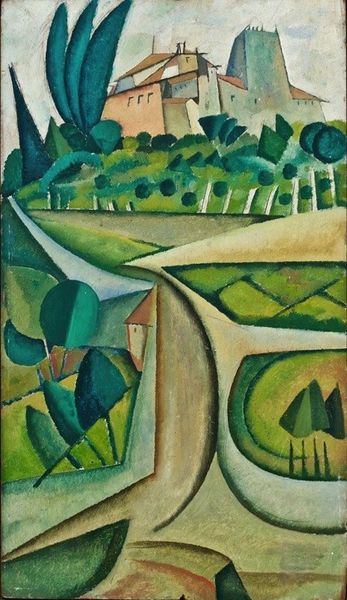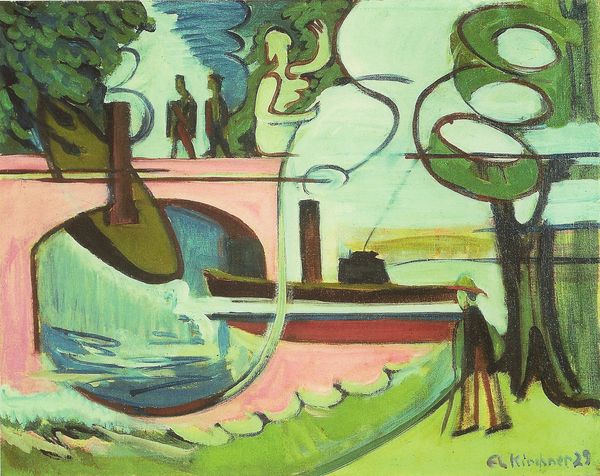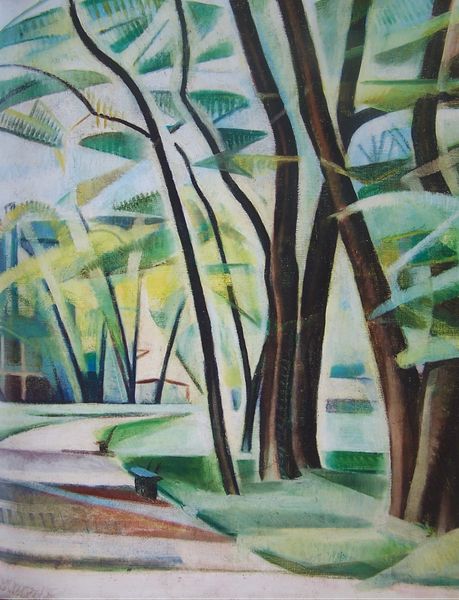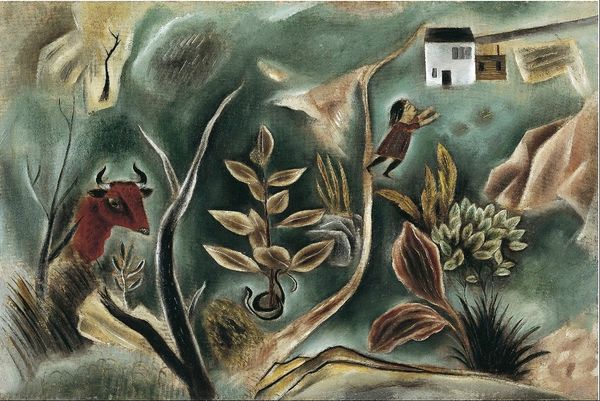
painting, plein-air, watercolor
#
cubism
#
abstract painting
#
painting
#
plein-air
#
landscape
#
watercolor
#
naive art
#
abstraction
#
cityscape
#
modernism
#
watercolor
Dimensions: 65 x 92 cm
Copyright: Pablo Picasso,Fair Use
Curator: Here we have Picasso’s "Square du Vert-Galant," created in 1943 using watercolor. It's an interesting cityscape viewed through the lens of Cubist abstraction. Editor: My first impression is that it feels intentionally disjointed and claustrophobic, like peering through fragmented glass into a public space that is otherwise free for public use. The green gives a natural feeling to the artificiality of the fractured landscape. Curator: I think situating this work within the historical context of Nazi occupation is crucial. Picasso, though he remained in Paris, grappled with themes of confinement and the disintegration of normalcy, reflected here in the disrupted perspectives and the suppression of conventional forms. Editor: Right, the production choices absolutely mirror that tension. The medium, watercolor, would have been easily accessible, a way to work quickly and perhaps covertly in his environment. The palette choices communicate scarcity in a materialist reading; he had to be economic, resourceful in making it through the Nazi regime as a cultural symbol. Curator: Exactly, and even the choice of the Vert-Galant, a historically significant park symbolizing Parisian resilience, speaks volumes. Picasso is almost reclaiming public space, and documenting how violence undermines collective memory. Editor: It's fascinating how the brushstrokes build form without ever quite solidifying it, that materiality becomes inherently unstable. One cannot escape how the application mimics urban decay; buildings become almost shapeless, like an ongoing construction that never yields stability. Curator: The interplay of light and shadow contributes, disrupting clear narrative lines. The very process by which it's made reflects the sense of instability in both form and material culture that defined daily existence. Picasso invites reflection on how the urban fabric shifts and changes. Editor: The naiveté further underscores a critique of representation itself. There's a kind of enforced regression to basics – to simplified forms that can be quickly realized without much expenditure – suggesting imposed limitations or the precarity of even producing art during such times. Curator: Indeed, it’s a powerful example of how art becomes a space to process historical trauma and resistance under Nazi oppression. Editor: A valuable material encapsulation of his state of existence within that moment.
Comments
No comments
Be the first to comment and join the conversation on the ultimate creative platform.
